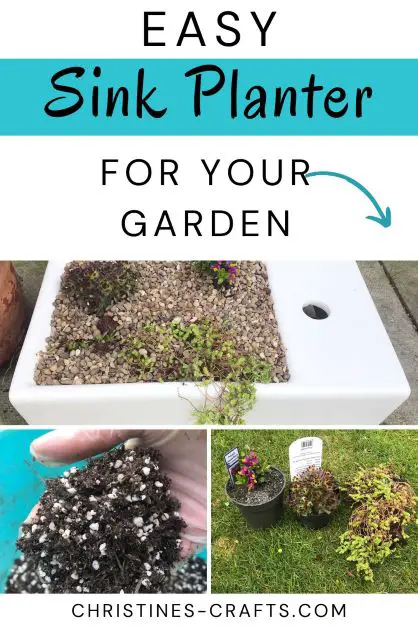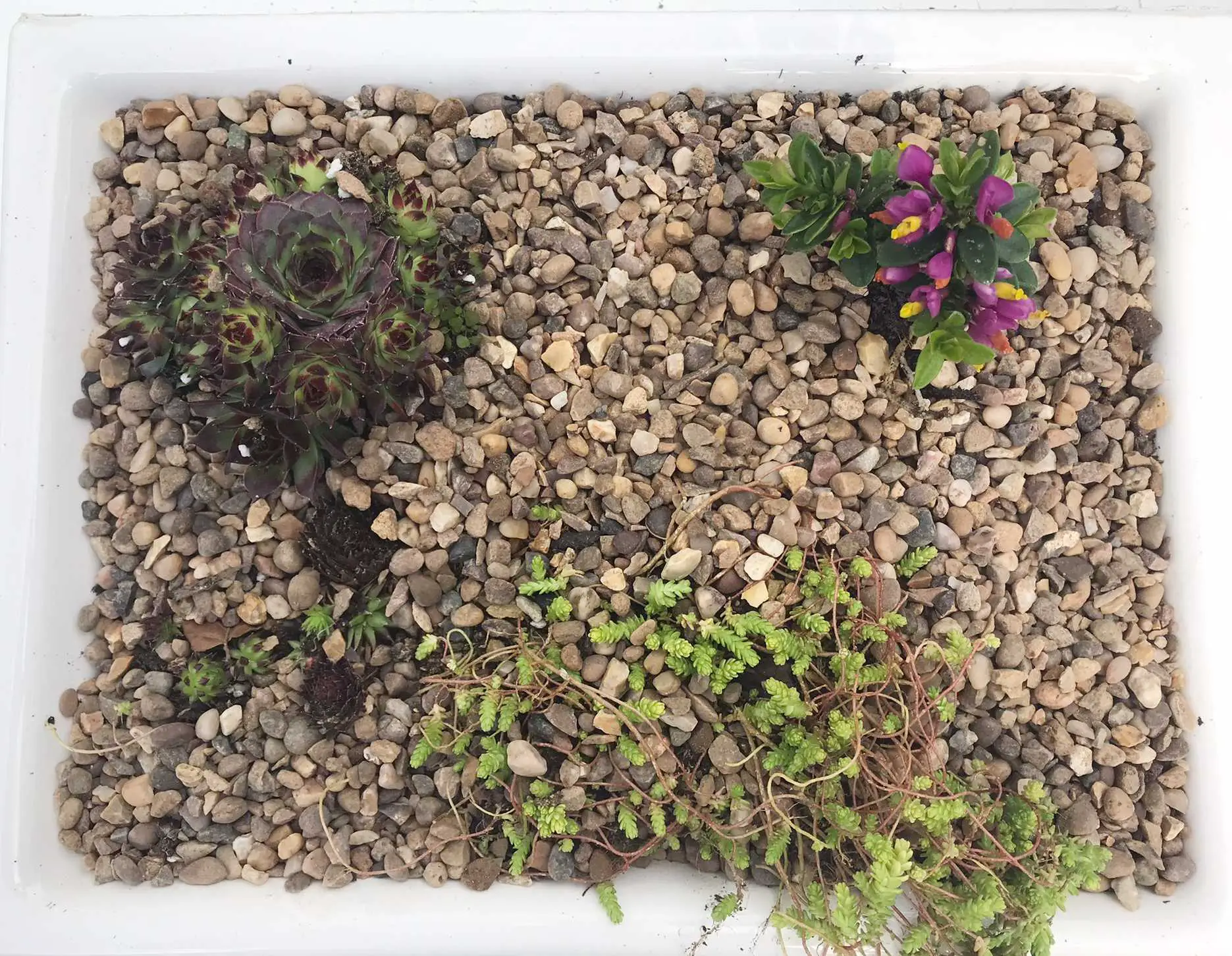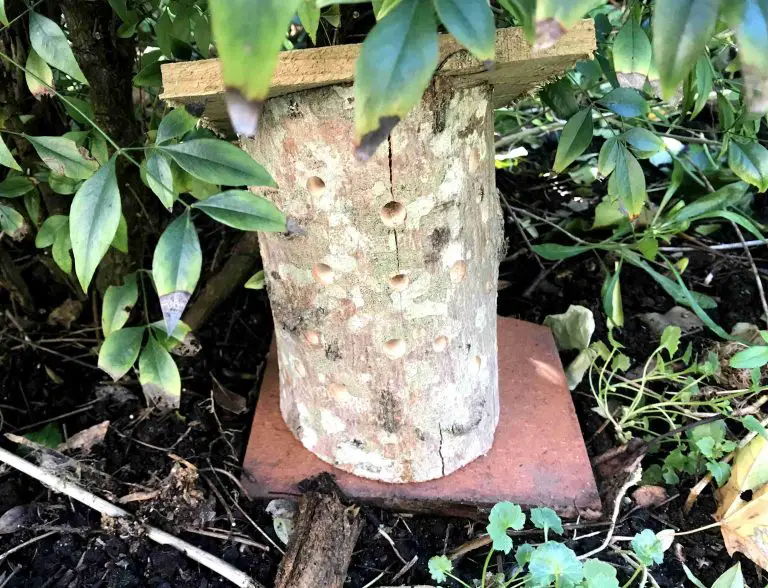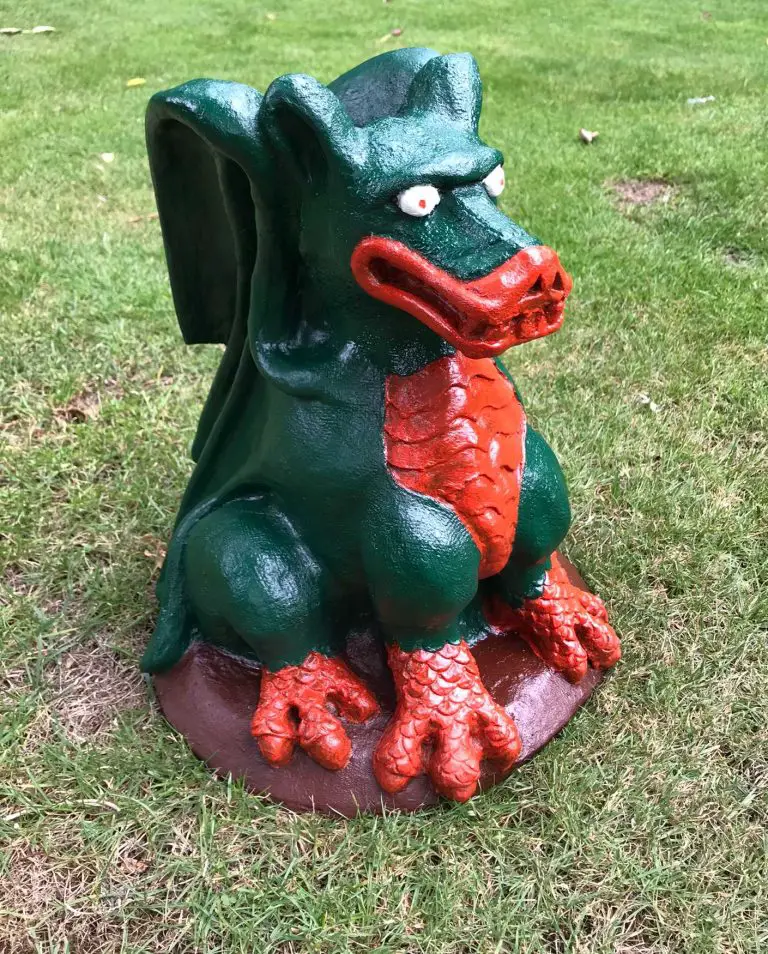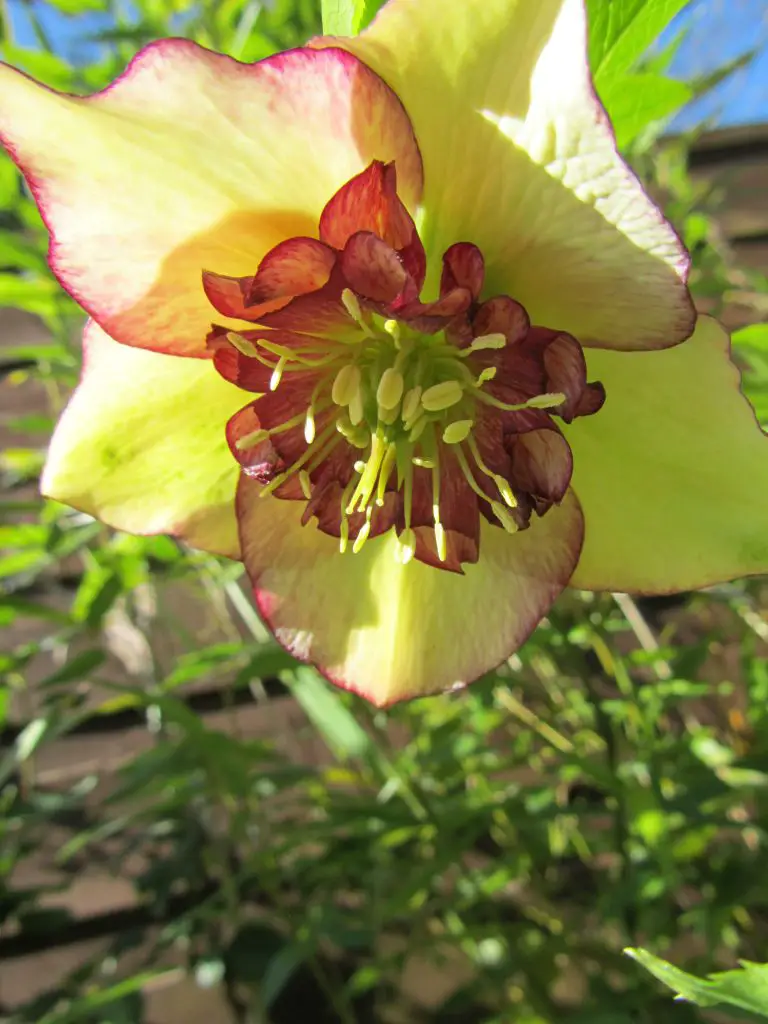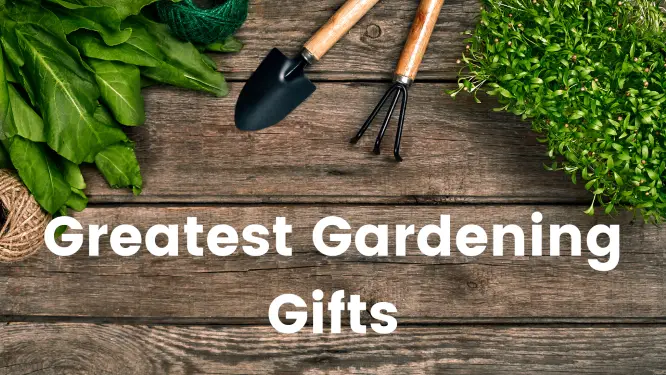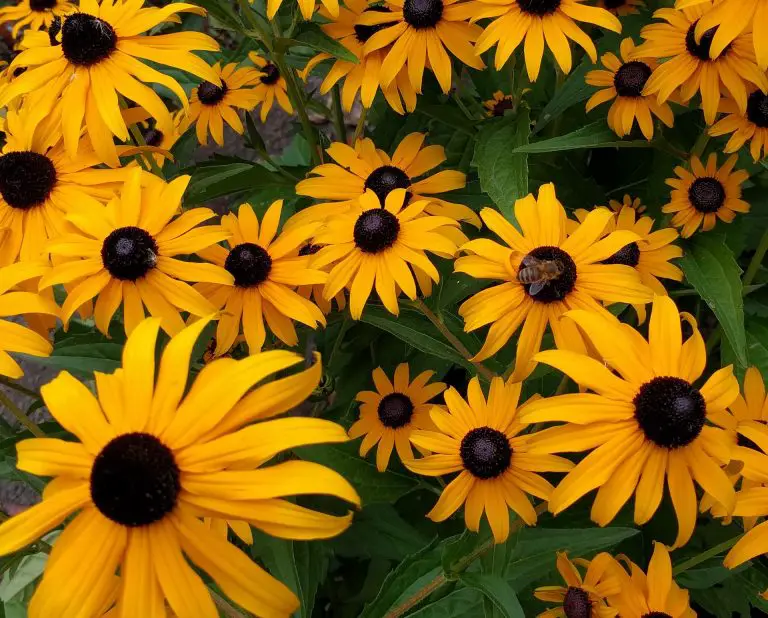How to Upcycle an Old Sink with Fabulous Planting
As an Amazon Associate I earn from qualifying purchases
One of the best ways of upcycling in the garden is to plant up old containers. A fabulous way of doing this is to plant up an old sink. Many people think that you need a Belfast (or Butler’s) sink which most of us do not have but you can use any old sink.
In this tutorial I am using a small sink from a downstairs cloakroom that a neighbour was getting rid of. It may be small but I think it has a special charm.
Some great sink planter ideas are alpine, herb or succulent plants so if you fancy any of those read on.
This page contains affiliate links meaning I earn a small commission if you use those links at no cost to you. I only recommend brands I use and trust.
You will need:
- Sink (or similar)
- Compost (preferably peat free)
- Grit or vermiculite or pearlite (to aid drainage)
- Something to prevent the plughole form blocking (eg stones, polystyrene pieces, etc)
- Plants
- Grit or gravel to decorate the surface of the compost


Plant Recommendations for Sinks
Alpines and Succulents
As with any gardening, check out your local conditions as I am writing from the UK and what grows well here may not grow well where you are. You can read all about growing succulents here
Creeping Thyme (Thymus praecox) is great as it has a creeping habit. Plant it near the edge of your sink and it will spread over the edge softening the look of your sink. It is evergreen and has pretty flowers in summer.
Saxifrages are a whole group of plants that work really well in sinks. Take a look at the garden centre and choose the ones that catch your eye. Many of them flower for several weeks so add interest to your sink.
Sempervivums are great low-maintenance plants and look nice all year round. I have included one in my sink in this tutorial.
Sedums are another group of plants that work really well in sinks. They are easy to keep and spread quickly so great if you are a beginner.
Echeveria are another group of succulents that have evergreen fleshy leaves. Great for a continual display.
Dianthus Are a group of plants that flower in early summer and are very easy to grow. You can keep them in you sink for years or plant them out into your garden as they grow.
Alpine Bulbs are a great way to add some more interest to your sink very easily. Some varieties that are small and well suited are Crocus, Galanthus and dwarf Narcissus. Be warned, however, that they do need re-potting most years or they can struggle.
Herbs
As a basic rule of thumb all of the Mediterranean herbs will thrive in a sunny positioned pot as they love to be well drained and hot. They will not withstand frost and they do not like being too wet so you are really looking at a summer planting only.
Some great herbs to grow in your sink are Chives, Mint, Basil, Parsley, Lemongrass or Coriander. Remember that you may not be able to grow them all in the same sink. Check their growing requirements. Also, some plants, such as mint, will take over the sink and mean that other herbs will struggle to survive.
Plant up your Sink
So, your first task is to clean your sink so that you are not introducing any disease if it has been planted up before or any chemicals if it is straight from an installation.
Then decide on where it is going to go. If, like mine, it is a small sink then you can plant it up anywhere and move it but many sinks become very heavy once they are planted so consider placing it where it will live and planting it up there.
It is important that your sink has plenty of drainage so your plug hole must not get blocked. Raise your sink up on something supportive so that the plughole is clear to drain. Bricks are a great idea but remember that if you are raising it up at all to make sure that the base is sturdy and will not be knocked over. My sink is on the patio and has two blocks of wood under it to hold it up clear of the ground.
Place your stones or whatever you are using to aid drainage over the plughole. This prevents the planting medium from blocking the hole.
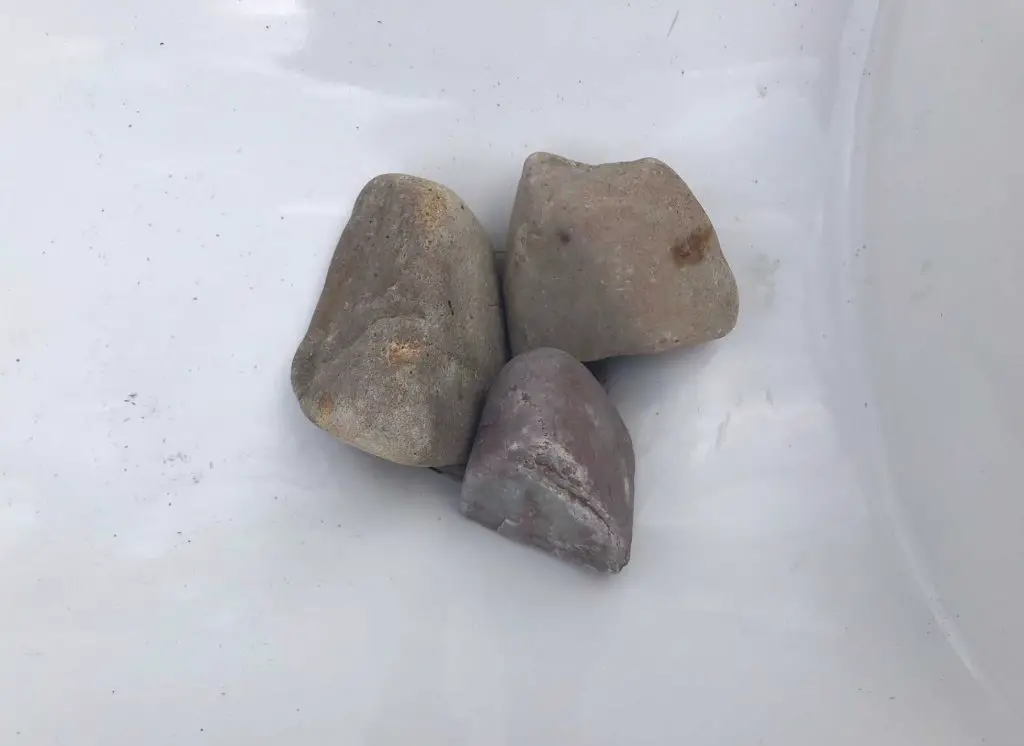
Prepare your planting medium. I recommend that you mix your compost with your gravel (or similar) approximately 60:40. For a really free draining pot you do need a lot of gravel. As a result you only want a bit more compost than gravel.
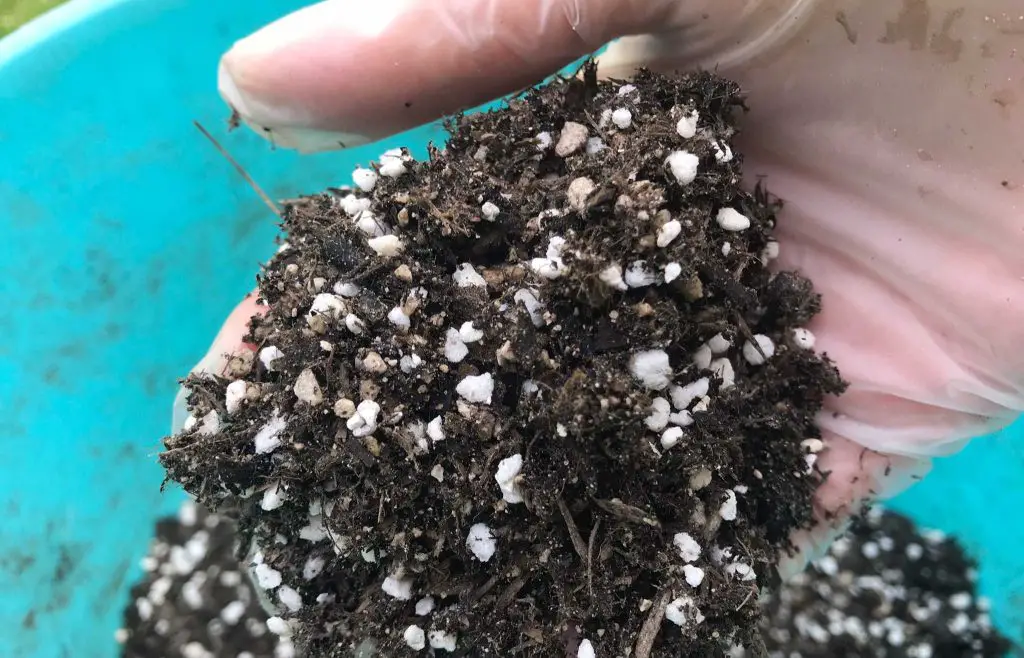
Add a layer of your planting medium to your sink and then place your chosen plants onto this layer. Re-position them (still in their pots) until you are happy with them. One of my plants is from an old planted up pot so it does not have a pot! I do like the way it trails over the front of the sink though.
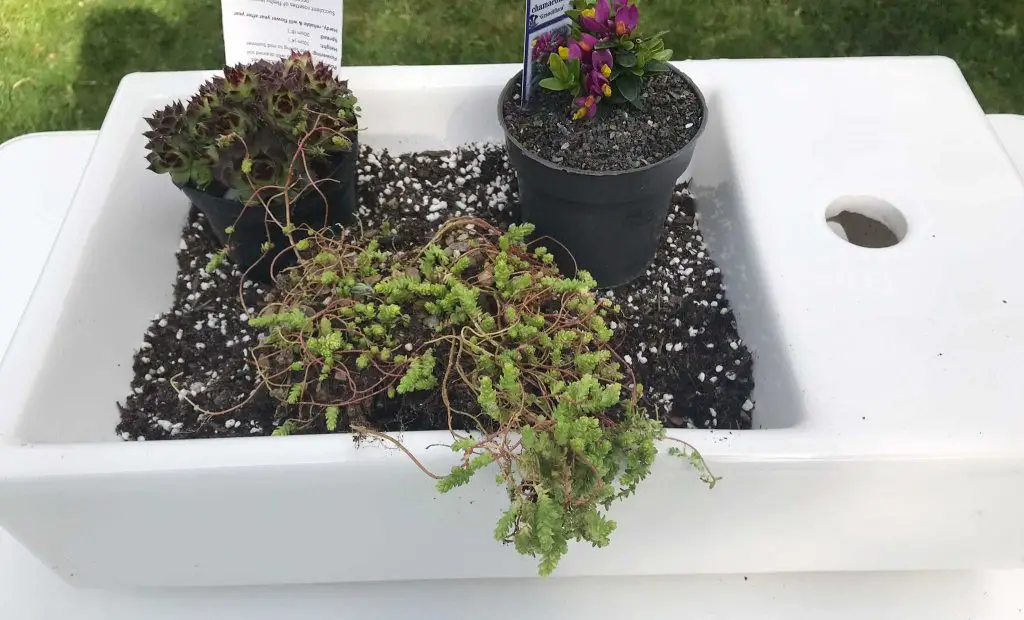
Once you are happy remove the plants from their pots and re-place them on the growing medium. Fill in around the plants with more of your growing medium until they are secure.
Finally, dress your sink by adding a layer of gravel between the plants. This really makes it look so much prettier and it stops any leaves that touch the gravel from rotting.
All that is left to do is to water your sink so that the plants can get settled in. Also enjoy how pretty the gravel looks when it is wet.
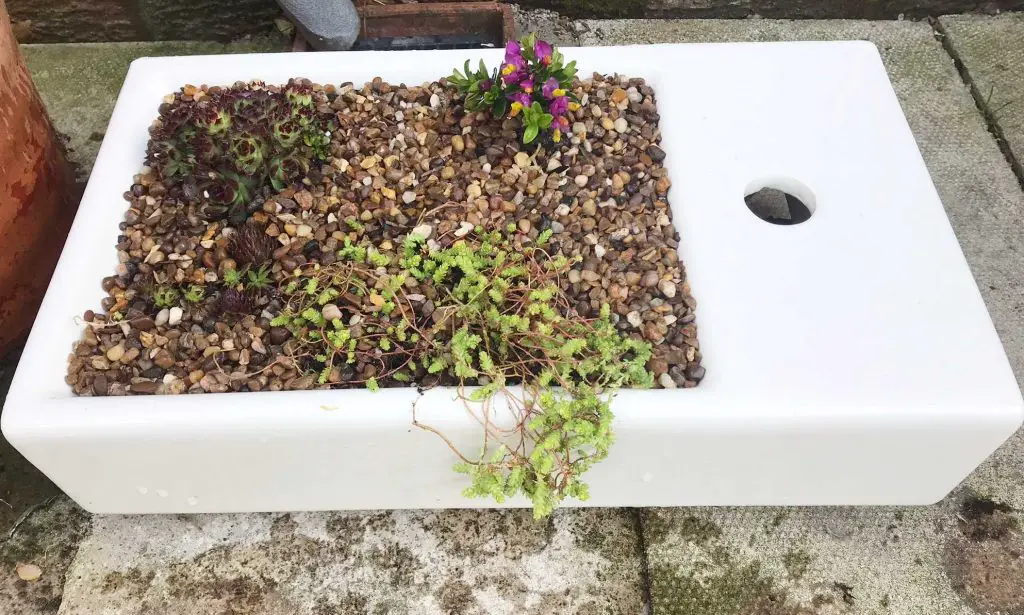
And now …
Enjoy your unique planter!
So, you know how to plant up a sink! Well, how about planting up a bath or a toilet for an interesting garden feature? You could use a whole different group of plants and really make a statement.
Or perhaps you are looking for different garden ideas. If so then check these out:
- Create a soothing solar powered water feature in 10 minutes
- How to make a gazing ball / sphere
- Upcycle an old chair into a Succulent seat
- Grow an Apothecary (Physic) garden
Good luck with whatever you are doing in your garden and please comment below with any questions you may have or suggestions for other great projects.
